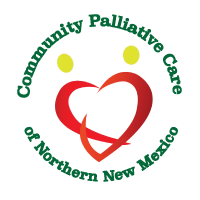Almost everywhere you turn today in the media, there is some reference to palliative care. Therefore, it is surprising how much confusion exists within health care in general but particularly amongst physicians about what it is, why it’s important, when to refer, etc. And, generally, I see much more of an ostrich-like posture about the response to this confusion on the part of many health care providers than one would expect. Given our aging population and data that demonstrates that palliative care increases longevity, reduces readmissions and improves outcomes, if this were a drug, everyone would be prescribing it. Instead, for many patients and families, getting a referral seems like hand-to-hand combat. For palliative care teams, education and building a referral base is a strategic, needlessly time-consuming one-on-one relationship building process. Isn’t it time we all got on the same page?
Let’s make a start by debunking some of the popular myths heard in health care circles about palliative care.
It all begins with the idea that palliative care equals hospice. Quite simply, it does not. Nor is palliative care only for terminal patients, a frequent corollary. Palliative care is appropriate for any patient with a serious or chronic illness and their family, from point of diagnosis onward, regardless of the patient’s age or prognosis. To be crystal clear, palliative care improves the quality of life for patients and families facing serious or chronic illness — whatever the diagnosis or prognosis. It prevents and relieves suffering by addressing pain as well as the physical, emotional, psycho-social and spiritual problems associated with serious and chronic conditions. This is the fullest, most inclusive definition of palliative care. If one looks at palliative care as a continuum from diagnosis to death and then bereavement, hospice is part of the palliative care continuum. It shares the same interdisciplinary, holistic focus and philosophy. What is different is that hospice patients must be within six months of death if the disease follows its normal progression and must give up curative treatment.
To be honest, in some settings, a narrower definition of palliative care is used. Most frequently, this occurs because palliative care staffing is limited, or it is viewed as an expense rather than as means of reducing cost while improving outcomes and satisfaction. But even in settings with resource constraints, palliative care works with patients who are not within the “less than six months” window.
Another corollary of this is that palliative care is only in hospitals and hospice is at home. In California and across the nation, this is changing. Between the concepts of the Accountable Care Organization, the Patient Centered Medical Home and CMS’ drive to reduce readmissions, there are a number of initiatives focused on providing both outpatient and community-based palliative care. These are initiatives that move outwards from hospital-based systems or upstream from hospices striving to create the continuum from their end. In every system and community, palliative care and hospice each have a role, and work together to keep the focus on addressing the needs of the patient and family and ensuring the best care possible, regardless of setting.
What particularly makes palliative care appealing to many patients, and sadly complicates the referral process for some physicians, is that palliative care goes hand-in-hand with curative treatment. The myth that a referral to palliative care means giving up active treatment or, its familiar partner in the eyes of family, giving up hope, needs to be debunked by physicians, nurses and health care providers everywhere. Research consistently indicates that palliative care when it accompanies curative treatment enhances its effectiveness. Patients live longer and, as a bonus, are demonstrably more satisfied with the care that they receive.
Because relief of pain is such a focus for every patient and provider, and palliative care has been successful in this arena, many feel that palliative care is only about pain and physical symptoms. Once again, this is not the case. If there is “magic” in palliative care, it is made possible by the use of an interdisciplinary team that focuses on both the patient and their family, and not just physical pain but on emotional, psycho-social and spiritual “pains” as well. One of my favorite palliative care examples is of a physician who at wits’ end called for a consult on a woman with intractable pain from advanced breast cancer. The team, including a Spanish-speaking social worker, talked to the woman and learned that she was concerned about what would happen to her children after she died. She wanted her children raised by her mother in Mexico not their father in the U.S. Once this was negotiated with the family, her pain was manageable with minimal use of medication. This is just one story but it is one that happens every day. Simply by addressing the patient’s emotional needs, along with her physical needs, the need for pain medication was reduced and her quality of life improved. The family is supported and the patient’s satisfaction with her physician’s care improves.
There is one large elephant in the room that remains to be addressed. Some physicians believe that asking for a palliative care consult means giving up caring for the patient. Hence, my comment above about the co-delivery of palliative care with curative treatment complicating referrals for some physicians. With palliative care workforce shortages, increasing demand and limited reimbursement for their services, palliative care teams must of necessity focus on “consulting”. While those who work in palliative care tend to be passionate about the needs of patients and families, and like all human beings their skill at being a consultant versus taking charge may vary, their goal is NOT to take a patient away from their primary provider or even their specialist. Their goal is to ADVISE AND ASSIST health care providers to provide the best care possible. On-going responsibility for care, and the reimbursements associated with on-going care, rightfully remain with the referring provider … unless or until that provider indicates the desire for it to be otherwise.
When I am talking with consumers, I am often asked “Isn’t palliative care just good medical care?” My answer is always “Yes, but…” The concept of attending to a patient’s quality of life is not new. In fact, before the last century, this was largely what medicine was defined to be for those who developed a serious or chronic illness. Clearly, every physician should always be seeking to ensure optimal quality of life for their patients. The “but” is because sometimes this statement has been made to the consumer by someone who sees no need to refer to palliative care. This diminishes the role of what is decidedly a specialty area. If we are going to care for the growing number of Americans who have these serious illnesses, then every physician will need to know about palliative care at a generalist level. Every physician will need to know how to have advance care planning discussions, how to discuss palliative care with patients and other basics, as well as where and how to refer as with any other specialist consultation.
But, palliative care is more than just good medical care. It is about focusing on the care needs of both the patient and the family, and addressing all the various forms of suffering… physical, emotional, psychological, social and spiritual that impede both quality of life, as that patient defines it, and achieving the best possible outcomes for the patient and family. At its very best, palliative care challenges every provider to take their ego off the table, be present to what that patient and their family feels are the optimal goals of care, and then bring the best skills and resources available to achieve those goals. In that, it is more than “just good medical care”, it is the best medical care.
By Helen McNeal
Executive Director of the California State University Institute for Palliative Care at CSUSM
medmonthly.com — September 2013

